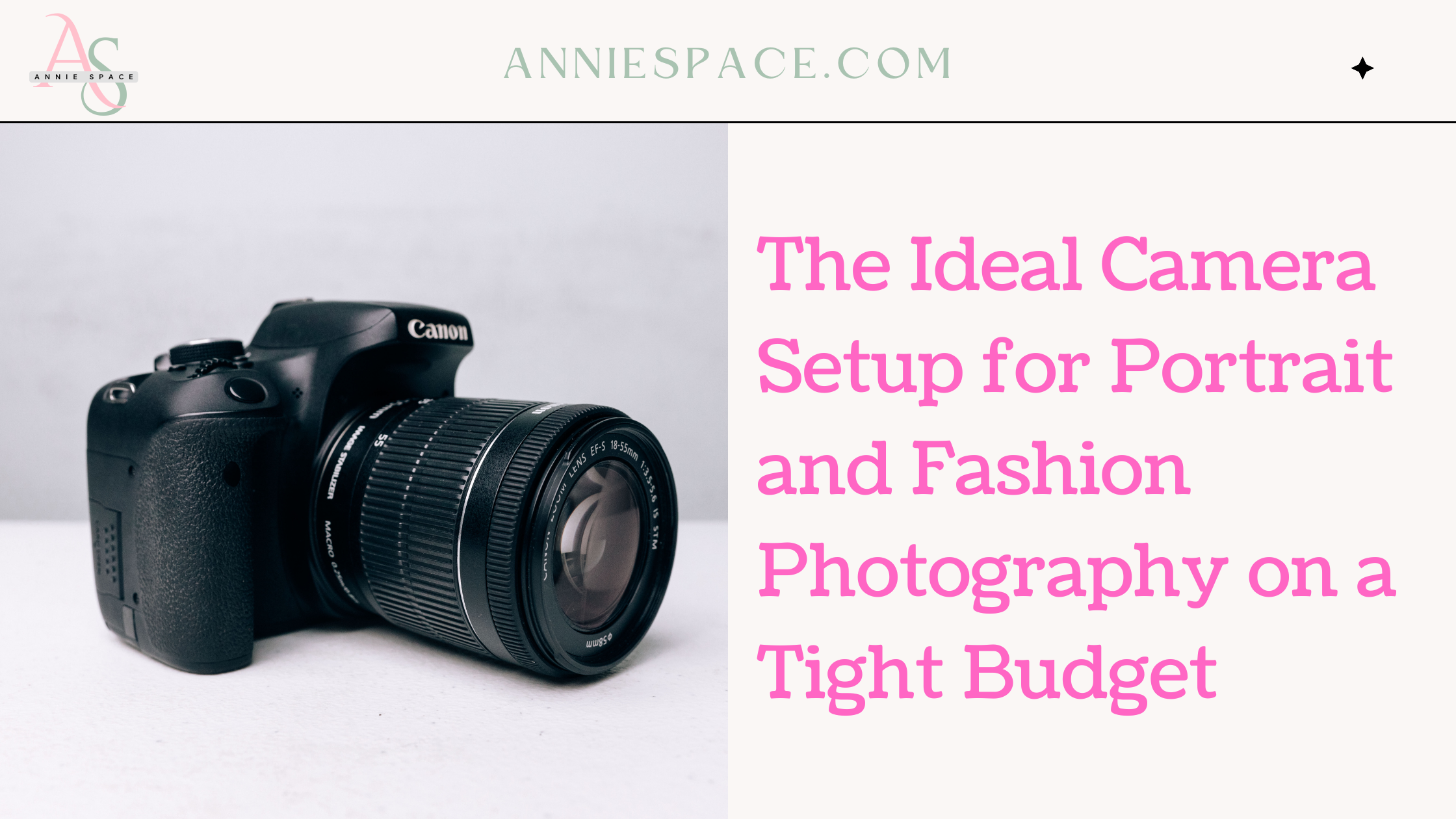As a photographer transitioning from hobbyist to professional, especially if you’re focusing on portraits, fashion, or group shots, choosing the right camera and lenses can feel like a daunting task. With so many options available, narrowing down the perfect setup within a reasonable budget can be tricky. However, with a little research and some strategic decisions, you can find the perfect combination of camera and lenses that will give your images that professional edge without going overboard.
Full-Frame Cameras: Your Best Bet for Portraits
When it comes to portrait photography, a full-frame camera is often recommended. The larger sensor allows for superior image quality, better depth of field control, and enhanced performance in low-light situations—all crucial features for portrait, fashion, and modeling photography. A full-frame setup provides a distinct advantage over crop-sensor cameras, particularly in creating that smooth, background blur (bokeh) that’s highly sought after in portrait work.
The Canon EOS RP is a fantastic entry into full-frame mirrorless photography. While it’s more affordable than some of Canon’s higher-end R series models, it still delivers outstanding image quality. Paired with a 50mm prime lens, the RP can capture sharp, professional-looking portraits with stunning depth. Another lens option to consider is the Canon 24-105mm, which offers versatility for both close-up and group shots, giving you flexibility for various types of photography assignments.
The Mirrorless vs. DSLR Debate
Many photographers who have been using DSLRs for years may be hesitant to switch to a mirrorless system, but mirrorless technology has advanced significantly in recent years. While DSLRs like the Canon 5D Mark III or the Canon 6D Mark II remain excellent options, especially if you’re comfortable with them, mirrorless cameras offer a range of benefits for portrait photographers.
Mirrorless cameras tend to be lighter and more compact, making them easier to carry around on shoots. They also have superior autofocus systems, especially when it comes to eye-tracking, which can be invaluable when capturing portraits of multiple subjects. The Canon EOS R8, for example, is often praised for its autofocus speed and accuracy, making it a powerful tool for anyone who photographs people. For a versatile, reliable option within a manageable budget, the R8 paired with a 50mm lens could be a winning combination.
Lenses That Make a Difference
One of the most important parts of your photography gear is the lens. While the camera body plays a role, your choice of lens will have a bigger impact on the final image quality. For portrait work, prime lenses such as a 50mm f/1.8 or an 85mm f/1.4 are ideal. These lenses create that beautiful shallow depth of field, ensuring your subject is the center of attention while the background softly fades away.
For those looking to capture fashion shoots or group portraits, a slightly wider lens like the 35mm f/1.4 could be a better fit. The 35mm allows for more versatility in framing, particularly when shooting multiple subjects or working in smaller spaces. Both the 50mm and 85mm are excellent for single-subject portraits, while the 35mm provides flexibility for broader compositions.
Is a DSLR Still a Good Choice?
Although mirrorless cameras are becoming the new standard, DSLRs still have a place in the world of professional photography, particularly for those on a tighter budget. Canon’s 6D Mark II or 5D Mark III continue to be solid choices for portrait photographers. Both models offer fantastic image quality, rugged build, and reliable performance. If you’re leaning toward a DSLR setup, consider pairing it with an 85mm prime lens for portrait work, or a 35mm lens for added flexibility.
The key advantage of investing in a DSLR is the availability of high-quality used gear. Many professionals are moving to mirrorless systems, which means the market is flooded with affordable DSLR bodies and lenses. This makes it possible to build a powerful setup without breaking the bank. Whether you go for a DSLR or mirrorless system, what matters most is the lens quality and your ability to experiment and learn.
Practical Tips for Beginners Transitioning to Professionals
No matter what camera system you choose, it’s important to focus on the fundamentals. Before jumping into new equipment, consider your workflow and shooting style. Are you more focused on studio portraiture, or do you need portability for on-location shoots? Think about how many subjects you’ll typically photograph, as this will influence your lens choice. For single-subject portraits, a 50mm lens is perfect, while a 35mm might be better suited for larger group shots or environmental portraits.
Finally, don’t forget to invest in other essential equipment such as lighting, reflectors, and editing software. Learning to manipulate light is just as important as having the right camera and lens. As you grow your photography business, these tools will be vital to creating polished, professional images that stand out.
Conclusion: Find the Right Balance
Choosing the right camera and lens for portrait and fashion photography is all about finding the balance between quality and affordability. Whether you opt for a mirrorless system like the Canon EOS RP or a DSLR like the 6D Mark II, the key is to pair your camera with a high-quality lens suited for portrait work. With the right combination, even on a tight budget, you can produce professional-grade images that will help elevate your photography career.
Remember, gear is important, but it’s your creativity and skill that will truly set your work apart.

